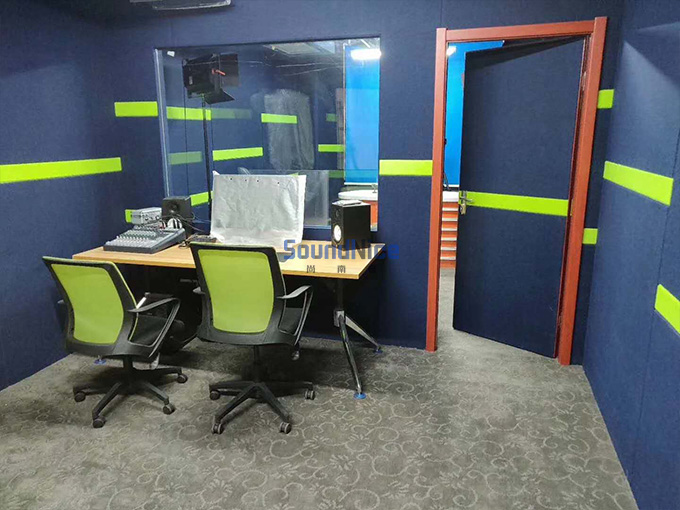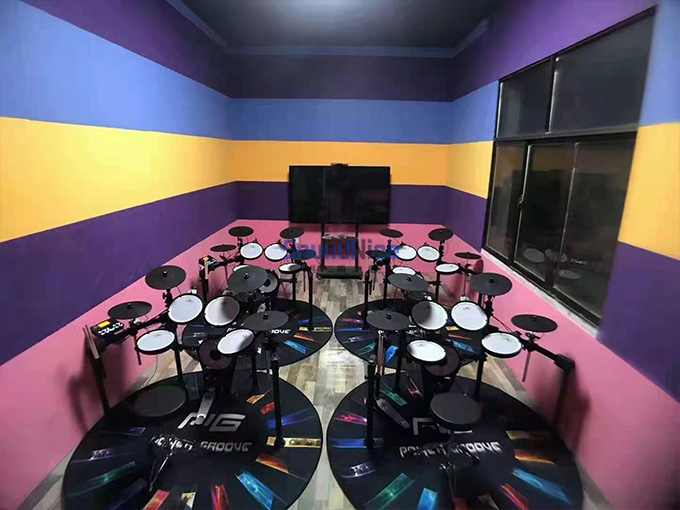
The Power of Recording Studio Acoustic Panels
In the realm of professional audio recording, quality is paramount. Whether you are a seasoned producer, a budding musician, or a voice-over artist, achieving pristine sound quality is non-negotiable. To attain this level of audio perfection, recording studio acoustic panels play a pivotal role. In this comprehensive guide, we'll explore the world of recording studio acoustic panels and unveil their significance in creating sonic excellence.
Understanding the Essence of Acoustic Treatment
Before delving into the specifics of recording studio acoustic panels, it's essential to comprehend the concept of acoustic treatment. Acoustic treatment is the practice of optimizing the sound environment within a space to minimize unwanted sound reflections, echoes, and ambient noise. In a recording studio, this is a fundamental step in achieving a crystal-clear, professional-grade audio recording.
The Difference Between Soundproofing and Acoustic Treatment
It's crucial to differentiate between soundproofing and acoustic treatment. Soundproofing primarily focuses on preventing sound from entering or leaving a room, while acoustic treatment is concerned with improving the sound quality within the room itself. Recording studio acoustic panels fall under the latter category.
The Role of Recording Studio Acoustic Panels
Recording studio acoustic panels, often referred to as sound panels or acoustic tiles, are purpose-built to address specific acoustic issues within a recording space. These panels are designed to absorb sound waves, reducing reflections and reverberations that can negatively impact the recording quality.

Types of Recording Studio Acoustic Panels
Bass Traps: Bass frequencies can be particularly challenging to control. Bass traps are designed to absorb low-frequency sound waves, preventing boomy or muddy recordings.
Diffusers: Diffusers scatter sound in various directions, breaking up reflections and creating a more balanced acoustic environment.
Absorption Panels: These panels are designed to absorb mid and high-frequency sound, providing a balanced and controlled sound environment.
Benefits of Recording Studio Acoustic Panels
Improved Sound Quality: The most obvious advantage of using acoustic panels is the significant enhancement in sound quality. By reducing reflections and ambient noise, recordings become crisp and clear.
Enhanced Focus: Musicians and artists can concentrate on their performances without being distracted by unwanted echoes and sound imperfections.
Flexibility: Acoustic panels can be strategically placed to target specific sound issues, making them a versatile solution for any recording space.

Choosing the Right Acoustic Panels
Selecting the appropriate recording studio acoustic panels is crucial for achieving the desired results. Consider the following factors when making your decision:
Room Size: The size of your recording space will dictate the number and type of acoustic panels needed. Larger rooms may require more extensive treatment, while smaller spaces may benefit from a minimal setup.
Acoustic Goals: Identify your specific acoustic goals. Are you looking to eliminate echo, reduce background noise, or control bass frequencies? Tailor your panel selection to meet these objectives.
Aesthetic Considerations: Recording studio acoustic panels come in various styles and designs. Consider how they will fit into your studio's aesthetics, as some panels can be both functional and visually appealing.
Budget: While high-quality acoustic panels are an investment, they are essential for achieving professional sound quality. Determine your budget and select panels that strike a balance between affordability and performance.
Installing Recording Studio Acoustic Panels
Proper installation of acoustic panels is critical to their effectiveness. Here are the steps to ensure a successful setup:
Identify Reflection Points: Determine the areas in your studio where sound reflections are most prominent. Common reflection points include walls and ceilings.
Strategic Placement: Install panels at these reflection points to absorb sound waves effectively. Experiment with placement to find the optimal configuration.
Spacing: Ensure that panels are evenly spaced for consistent sound absorption.
Wall Mounting: Most panels can be easily mounted on walls using brackets or adhesives. Follow the manufacturer's instructions for a secure installation.
Ceiling Panels: If ceiling reflections are a concern, consider installing ceiling panels in addition to wall panels.
Maintaining Your Recording Studio Acoustic Panels
To ensure the longevity and effectiveness of your recording studio acoustic panels, it's essential to take proper care of them. Dusting and occasional cleaning can help maintain their performance. Regularly inspect the panels for any signs of wear or damage and replace them as necessary.
Conclusion
Recording studio acoustic panels are an indispensable tool for anyone serious about achieving professional audio quality. By understanding their purpose, selecting the right panels, and installing them correctly, you can create an acoustically optimized environment that enhances your recordings and elevates your music, podcasts, or voice-over work to the next level.








Leave a comment